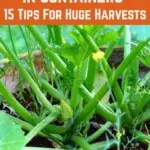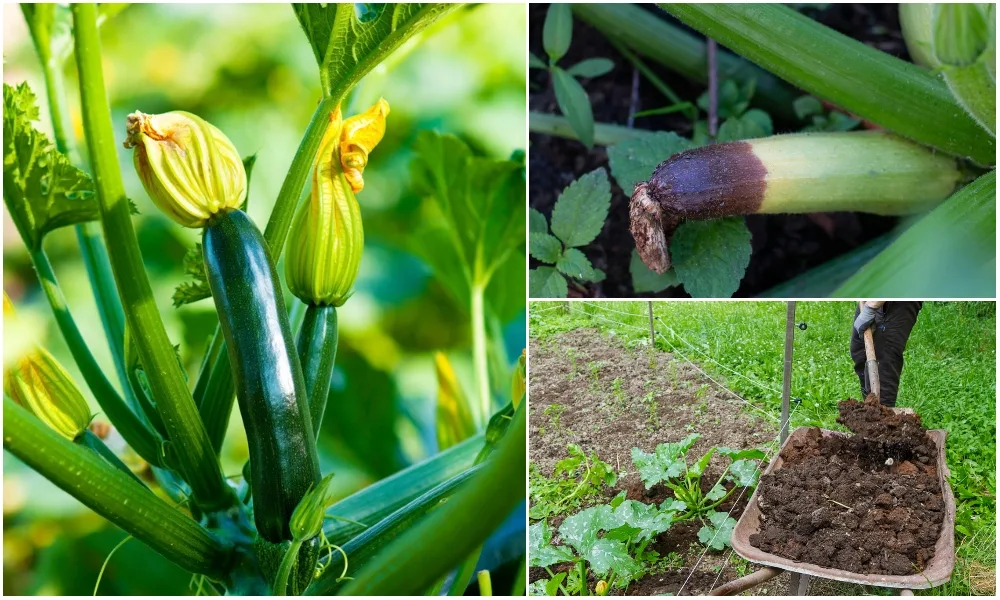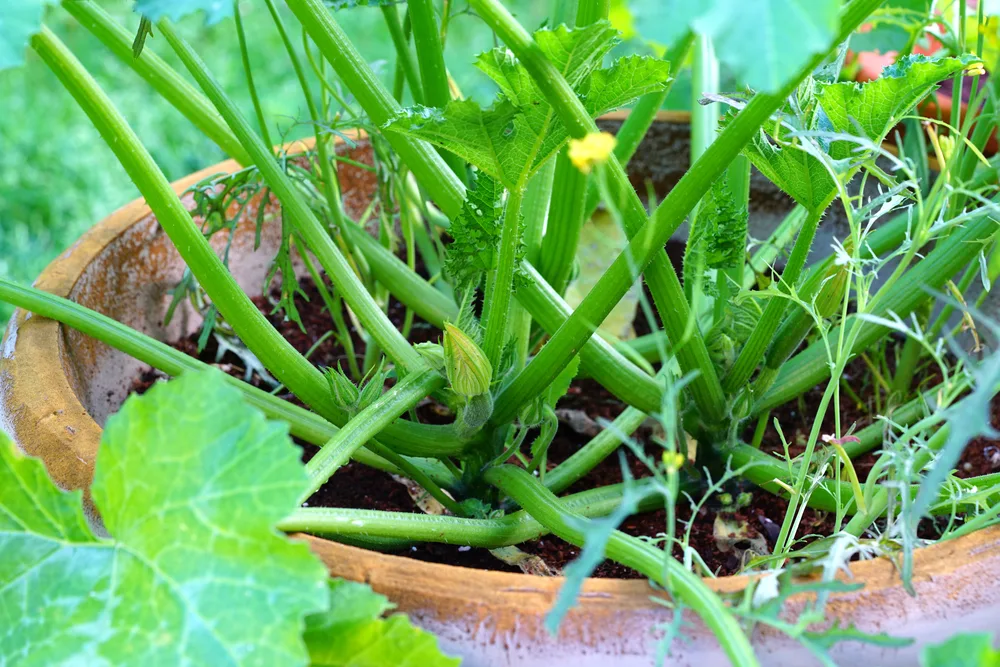
Zucchini is a great plant to grow, whether you are an experienced gardener, or a complete beginner.
Though they do need certain things to do well, and there are a number of mistakes you can make, they are usually a relatively easy and trouble-free addition to a home garden. In fact, you could argue they are one of the easiest vegetables to grow in the home garden.
If you don’t have much space, you’ll be delighted to hear that you can grow them in containers.
When it comes to growing zucchini in containers, however, there are a few things to remember.
As always when it comes to container growing – it will generally take a little more work and effort than growing things in the ground. The decisions you make before you start, and the actions you take along the way, will make a big difference to how well things go.
To help you make sure your gardening efforts are successful, here are fifteen tips for growing zucchini in containers:
1. Choose the Right Zucchini Varieties
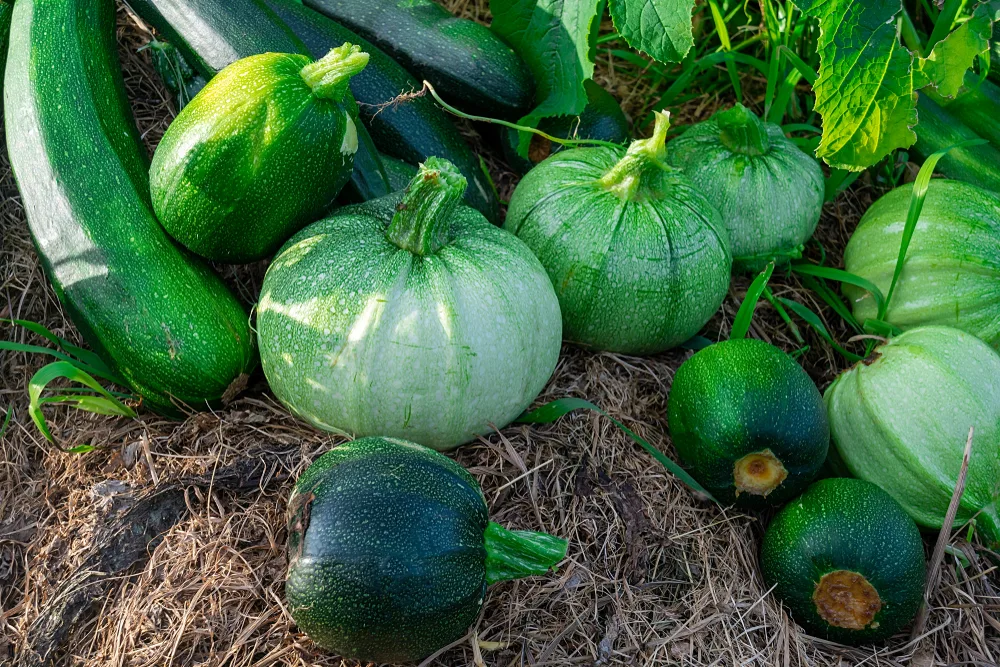
Perhaps the most important thing when growing zucchini in containers is choosing the right varieties to grow. Some zucchini grow much larger than others.
Particularly large, sprawling plants won’t do well in containers. So it is a good idea to choose smaller, more compact dwarf varieties.
Some interesting varieties to consider include:
- Astia
- Black Beauty
- Burpees Golden Zucchini
- Cube of Butter
- Emerald Delight
- Max’s Gold
- Raven
- Silver Bush
- Spacemiser
- Verde di Milano
Though of course this is by no means a comprehensive list. If in doubt, good choices for containers often include the word ‘bush’ or ‘patio’ in their description. Remember, if you want to save seeds to sow next year, you will need to choose an heirloom variety.
2. Choose the Right Containers
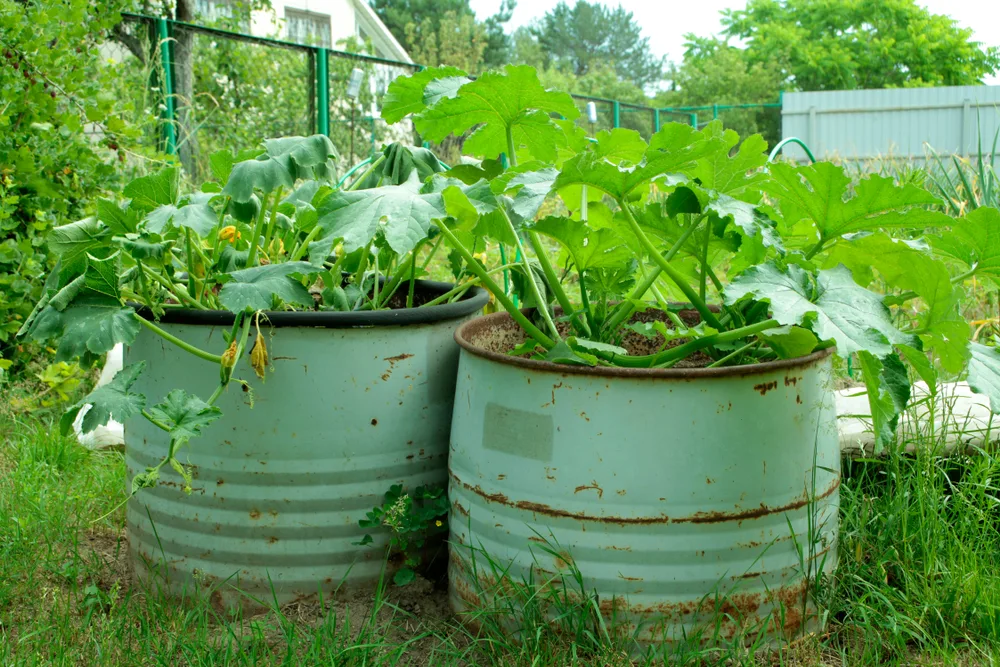
Zucchini is quite a good choice for container gardens because it has relatively shallow roots.
A container that is around 12 inches deep should be sufficient. However, as a hungry plant, zucchini needs plenty of nutrients to grow and produce well. This means that the larger the container you can provide, the better. The larger the container, the less the need to replenish the nutrients over time. (And the less watering it will require).
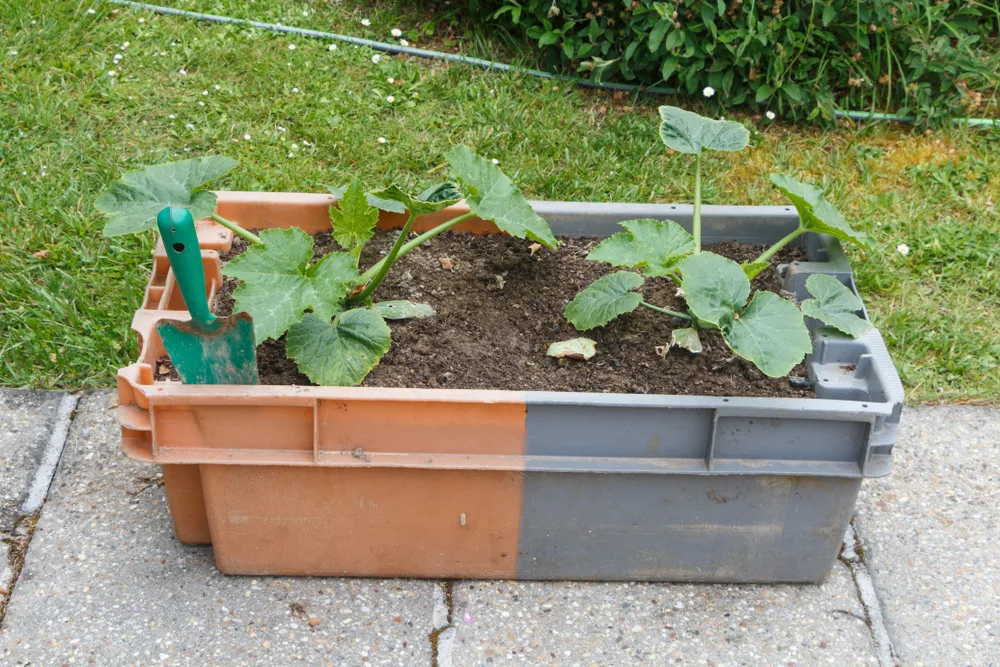
As an absolute minimum, a container of 12 inches across can do in a pinch. But for most varietals, you will do far better with a container at least 24 inches across.
If you want to grow more than one zucchini plant, a half-barrel or other large reclaimed receptacle can be ideal. In half a 55 gallon barrel, you could place three-four zucchini plants, for example (perhaps even along with a few companion plants).
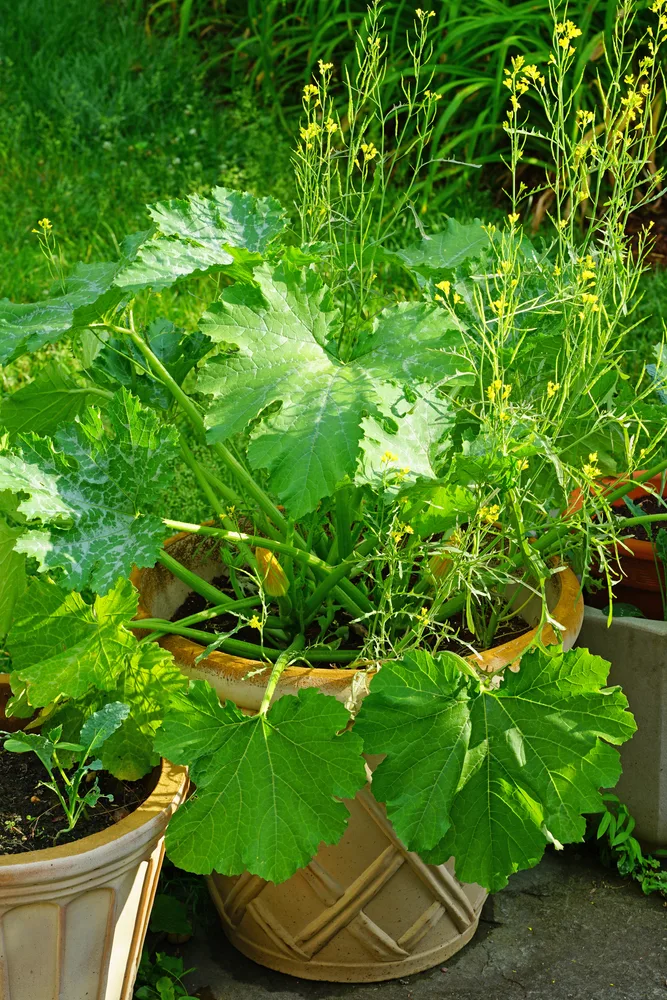
If you are buying a planter or container rather than using reclaimed materials, I would advise against buying a new plastic one – for environmental reasons. Try to use reclaimed plastic where you use plastic at all.
Though terracotta pots are a great option for an eco-friendly garden, they might not be the best choice for thirsty plants like zucchini because they dry out so quickly.
A wooden planter lined with hessian or another natural material is a great choice. And though they can be more expensive, glazed ceramic planters can also work well for growing these plants.
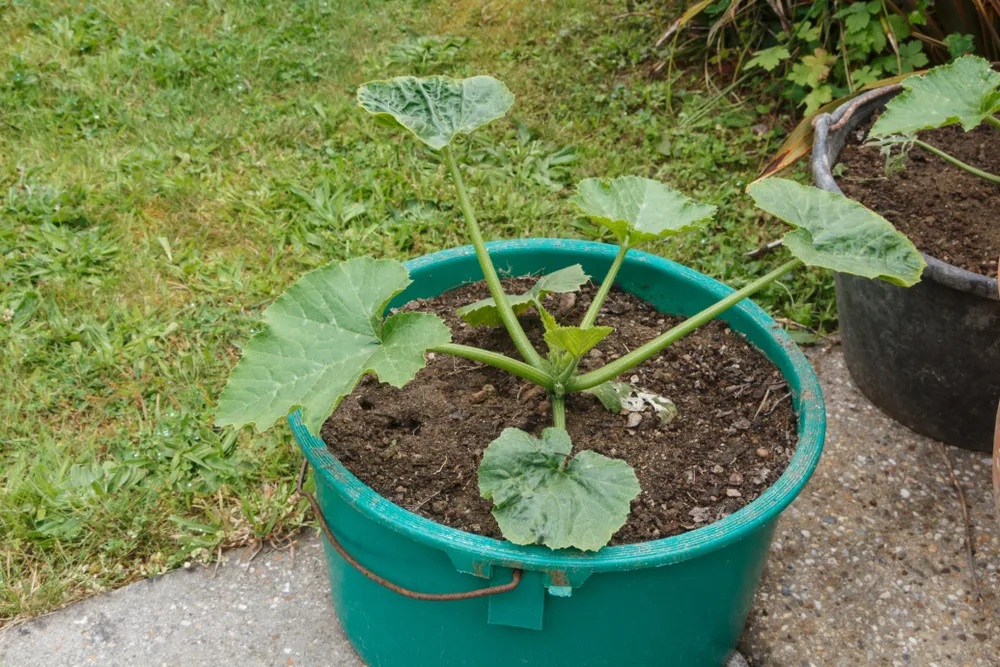
Whatever container you choose, it is very important to make sure that it has drainage holes in the bottom. Though zucchini do like plenty of moisture, they do not like to be waterlogged. The stems can rot at the base if water collects around the crown of the plant.
3. Select The Right Potting Mix
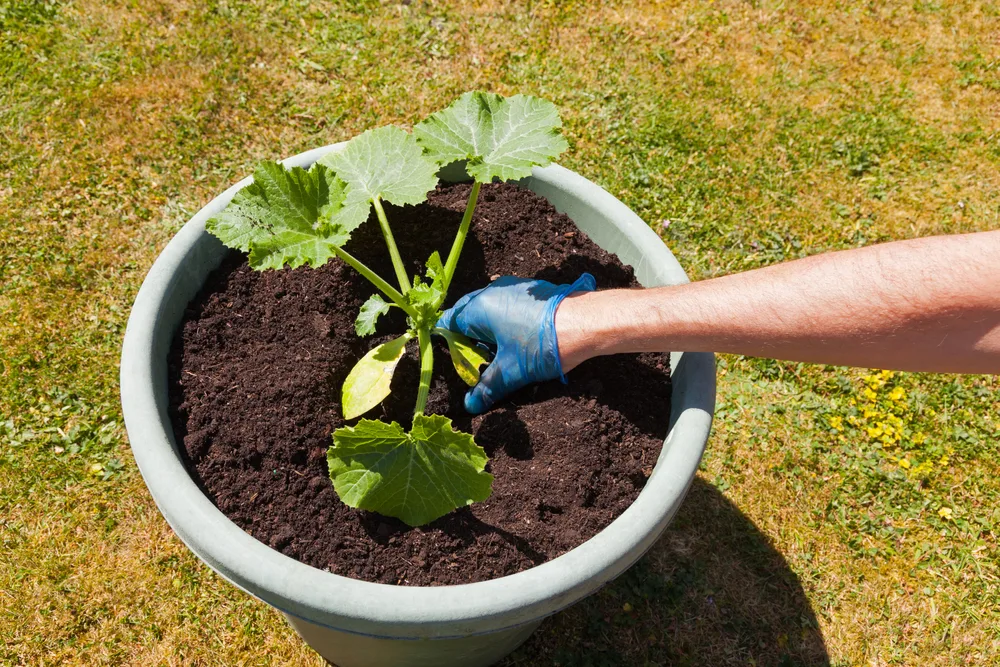
Once you have the right containers, it is also very important to think about selecting the right potting mix. It is very important to choose a fertile, free-draining mix. Opinion is divided about whether you should choose a soil based or a soil-free potting mix.
If you like to take a DIY approach, you might want to consider making your own potting mix at home.
Personally, I find that plants do very well in my homemade mix, which includes around 1/3 loam (from my garden), 1/3 homemade compost, and 1/3 leaf mold (made from fall leaves).
The reason that many people advise against using garden soil in containers is that it can harbor pathogens that cause plant diseases, and most importantly, because it will likely contain weed seeds that will pop up in your containers.
Personally, however, I do not mind weeding out the weed seedlings when they appear. And I’ve not had too many issues with disease.
The reason that I choose to make my own potting mix for containers is that I want to avoid buying peat-based composts. These are environmentally harmful. We should keep the peat – a valuable carbon sink – in the ground. Making your own potting mix can save money too.
However, if you don’t have a garden, or would rather not take the DIY approach, there are suitable peat-free alternatives that you can buy. Such as those made from coconut coir, for example.
Even if you don’t make your own potting mix, making your own compost at home is still the right thing to do – for a wide range of reasons.
As you will discover later in this article, it can be useful to have on hand to use as a mulch around your container grown zucchini.
4. Place Containers in a Suitable Spot

Once you have chosen your containers, and decided how to fill them, you also need to decide where they should go. Sunshine is very important when growing zucchini. They will need plenty of it. At least six hours of sunshine a day is required – and more is better.
One of the good things about growing zucchini in containers is that you can potentially move them around so they get plenty of light throughout the growing season.
Take a good look at your garden – observation is key. Look at how the light moves across your garden during each day, and note how this changes as the year progresses. If necessary, you can place your containers in one spot in the spring – then move them to a different spot as summer progresses and fall arrives.
It is important to remember that though each container will only itself take up a small amount of space, the plants themselves can spread out quite a bit (depending on variety) around the edges of the container. Make sure there is space to accommodate all the leaves of the plant.
Even when it is a bush rather than a vining variety it can still spread beyond the confines of the container itself. Bear that in mind when deciding on placement.
5. Think About Providing Support For Your Zucchini Plants
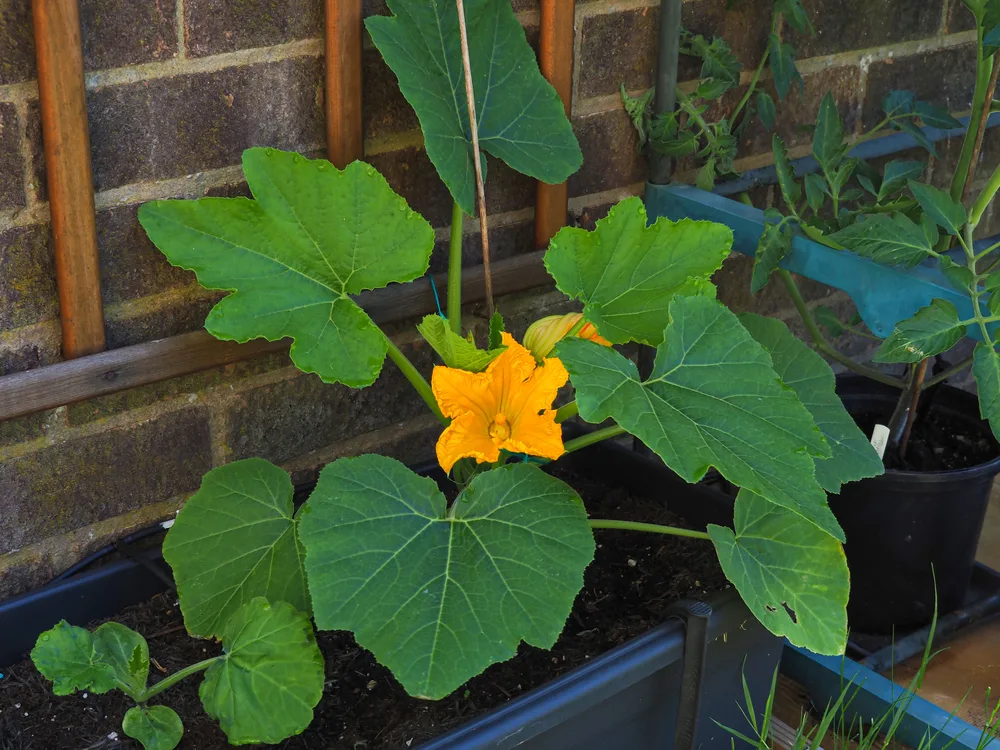
Even with bush varieties, you can consider providing some support to allow your zucchini plants to take up less space. And for vining types in a smaller space – it is absolutely vital.
Consider using a trellis, stakes, or tomato cage-like structures to corral plants and make the most of the space you have available. These vertical gardening techniques really can help you make the most of space – especially in a container garden.
6. Don’t Sow Seeds Too Early or Too Late
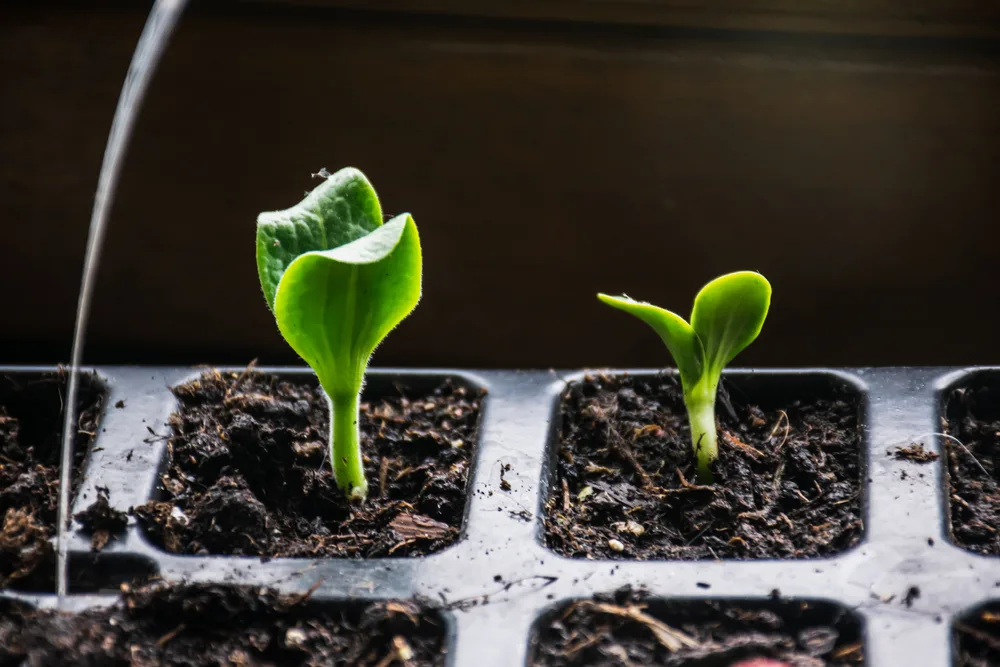
Zucchini need a minimum temperature of 60 degrees F. for germination, and will germinate best at temperatures between 70 and 90 degrees F. You have a couple of options when it comes to sowing your seeds.
The first option is to grow seeds indoors (around 4-6 weeks before the last frost date where you live) before transplanting them into outside containers once the weather warms.
The other option is to direct sow zucchini seeds in your containers from around 2 weeks after the last frost date in your area.
Sow seeds too early, and the seeds may not germinate. Young seedlings will also suffer if there is a sudden frost.
But plant too late and your overall yield will be reduced – especially if you have a very short growing season.
Be sure to sow seeds around an inch deep, and at the right time for your area. And if you start seeds indoors, remember to harden off seedlings before placing them into their final growing positions.
7. If You Did Direct Sow, Don’t Forget to Thin Seedlings Where Necessary
Direct sowing can let you get growing, even if you left things a little late. But because you can’t guarantee 100% success rates when it comes to germination, you will usually sow at least 2-3 seeds per single container.
Prick these out and plant them into separate containers, or use them in another way. But always make sure you stay on top of things. Thin the seedlings in plenty of time, before they begin to compete with each other.
Some gardeners, especially those new to growing their own, are reluctant to uproot a healthy seedling. But it is important to do so in order to get a good yield from the plants that are left.
8. Get Your Watering Regime Right
As mentioned above, zucchini need plenty of water and like a relatively moist environment. But they don’t like waterlogged conditions. How often you should water your zucchini in containers will depend on a number of factors.
Temperatures, humidity, wind and a number of other things will determine how quickly your containers will dry out. At times, you may have to water every day. At other times, a good soak every few days may be sufficient.
A general rule is that you should check the top 2 inches of soil – if they feel dry to the touch, water deeply, allowing water to flow out of the base of the container. Then allow the top of the soil to dry before you water again.
Another thing to remember when it comes to watering zucchini in pots is that you should always try to water the soil not the leaves. Try to avoid splashing any water onto the leaves. When leaves are wet they are more likely to succumb to a range of problems, like powdery mildew, for example.
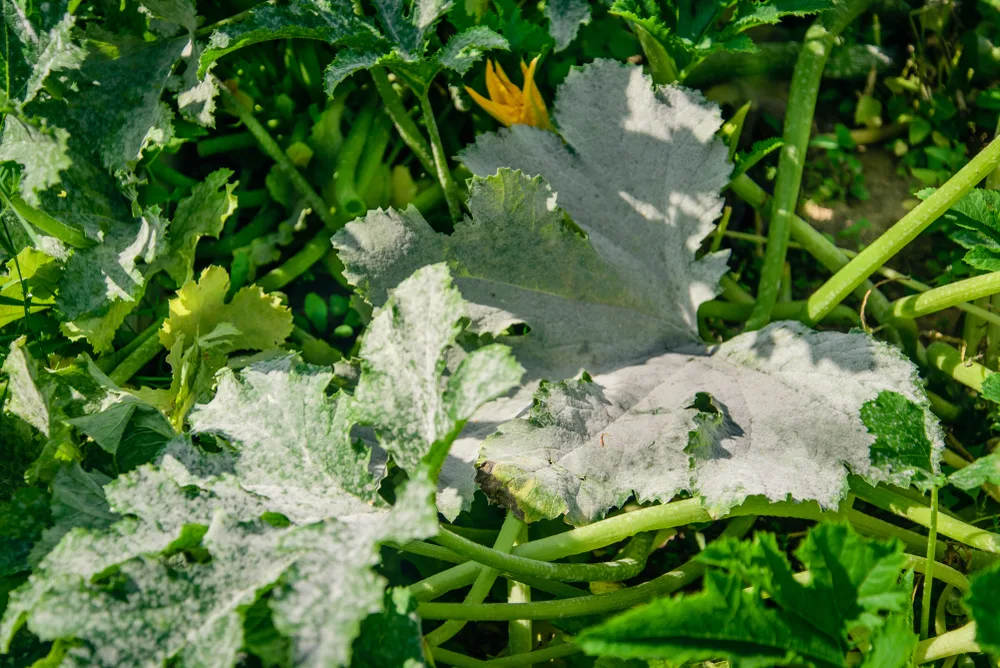
One thing that might help is sinking a small pot into the growing medium in your container, and watering into that.
Another option is to use a watering globe or a glass or plastic bottle (perhaps with a terracotta watering spike) to slowly release water into the soil.
(This is also a good option for watering plants if you are away from home – or too busy to take care of your container plants for a few days.)
9. Add a Mulch Around Your Zucchini
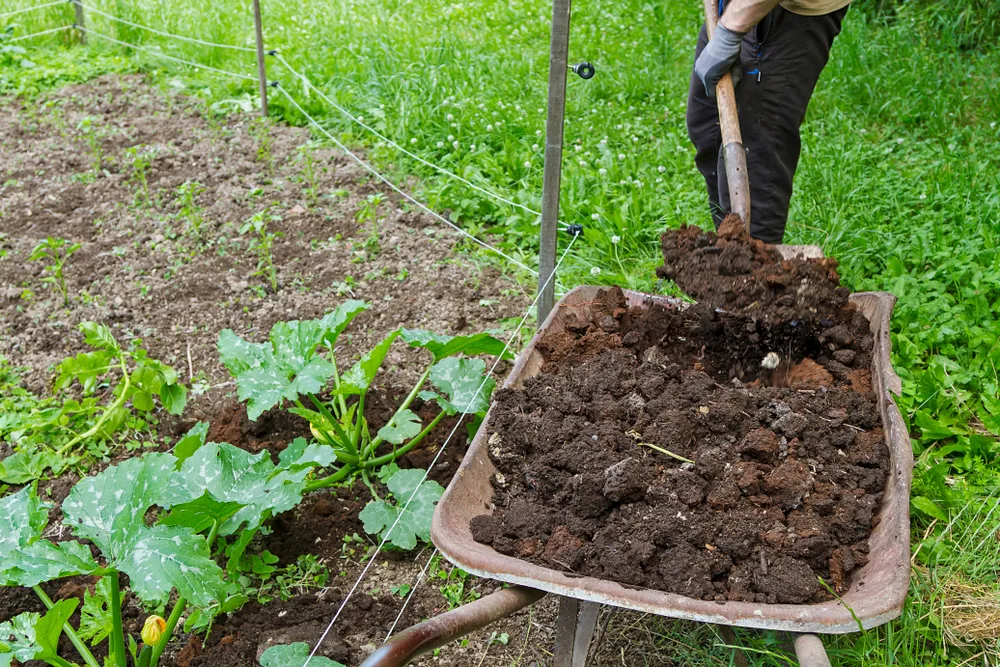
Mulching is one great way to reduce water use, and cut down on the moisture loss from your containers. Adding a good quality organic mulch reduces the rate at which water evaporates from the growing medium.
But mulch can also add the nutrients that your zucchini plants need.
Mulches can be used in a container garden in very similar ways to in regular gardening.
Homemade compost or leaf mold make great mulches for container grown plants. They will slowly release nutrients into the growing medium below, and help keep plants strong so you get a great yield.
10. Plant Companion Plants in Nearby Containers
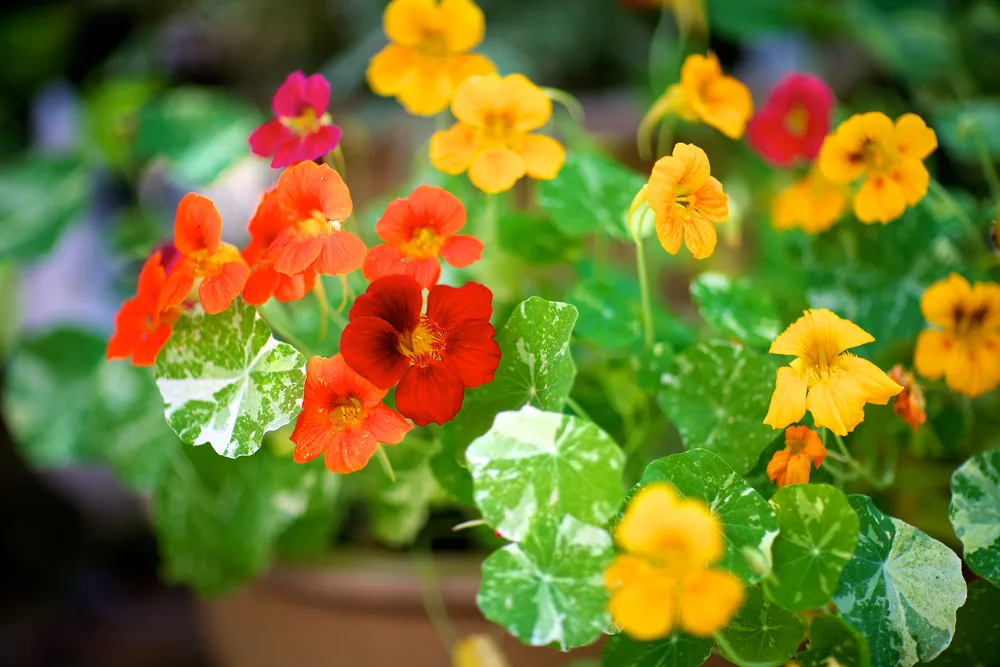
Companion planting is something more commonly discussed when talking about plants grown in the ground. But creating polycultures by grouping different plants in containers can also be beneficial.
While not all the benefits of companion planting are relevant to container gardening – some most definitely still are.
For example, companion plants placed nearby might help by attracting bees and other pollinators to improve fruit set on your zucchini plants.
Companion plants grown in containers nearby might also help to attract beneficial insects that prey on pest species. They might also act as trap crops, or repel, confuse or distract a range of pests.
Good plants to grow in containers nearby, or in larger containers with zucchini include radishes, nasturtiums, borage, and a wide range of other flowers and aromatic herbs.
11. Feed Your Zucchini Around Once a Month
Zucchini grown in the ground do need plenty of slow release fertility in the soil and in the form of mulch, and are also usually fed during the flowering and fruiting period.
But with lower access to nutrients, due to their limited space and disconnection from the soil biota, zucchini grown in containers will generally need to be fed more often.
Generally speaking, it will be best to feed zucchini with a good quality organic feed at least one a month over the growing season.
The good news is that you do not need to spend a fortune. You can make your own liquid feeds using plants or other ingredients from around your home.
12. Remove Leaves as Necessary (And Eat Them!)
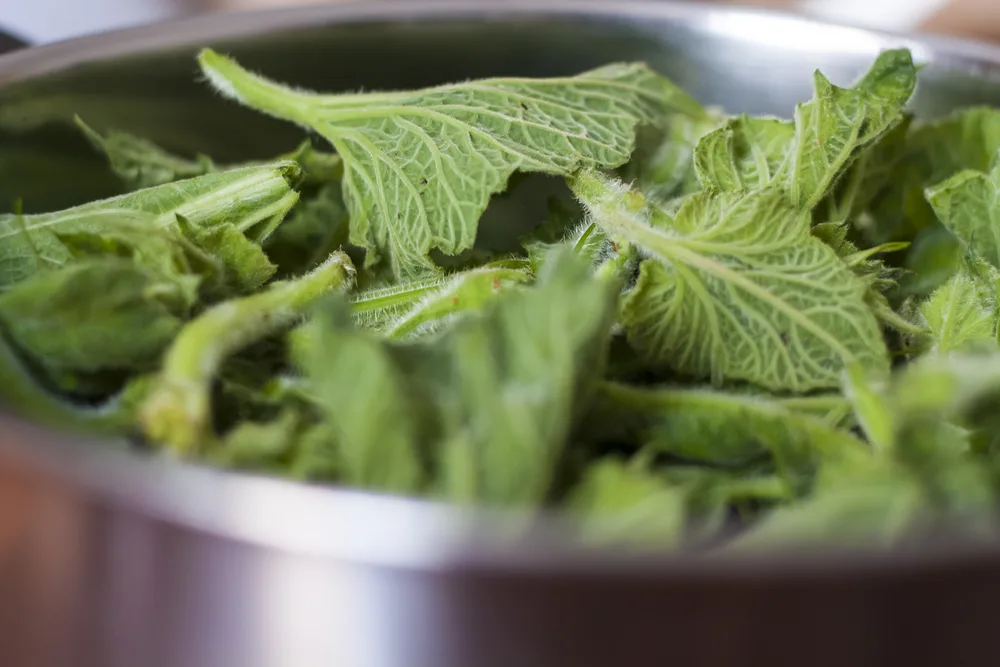
When growing zucchini in containers, space can often be an issue. If you have several containers, all quite close together in a small space, you may have issues with leaves blocking the light from the ripening fruits of neighboring plants.
In a small space garden, getting rid of the odd leaf can help control congestion, and make sure the fruits get the sunshine they need to continue to ripen and grow.
Don’t be afraid to remove leaves as necessary to let in the light, or to improve air flow. Improving air flow is another way to reduce the chances that your plants will succumb to a fungal disease.
Remember, healthy zucchini leaves need not be discarded. These tasty and nutritious greens (along with additional flowers) can be an excellent additional harvest.
Eating secondary yields can really help you make the most of your space – no matter how small it may be.
13. Cover Zucchini if an Early Frost Threatens
Zucchini plants can often continue to produce well long into the fall. If you have a productive plant outside and there is a risk of an early frost, consider bring the plant under cover to allow it to produce for a little longer.
(Bring it into a polytunnel or greenhouse, for example). The same idea could apply to unseasonably late frosts earlier in the year.
If you don’t have a light, bright covered growing area to place it in, there are still other ways that you could protect your plant. For example, you could cover it with a cloche or row cover of some kind. Often, you can make something suitable from reclaimed materials.
You could also consider insulating the outside of plant pots to keep roots safe during a cold snap, or cover the plants at night with reclaimed fabric or eco-friendly material.
Here are some more clever ways to protect your plants from frost.
14. Harvest Zucchini While They’re Still Quite Small
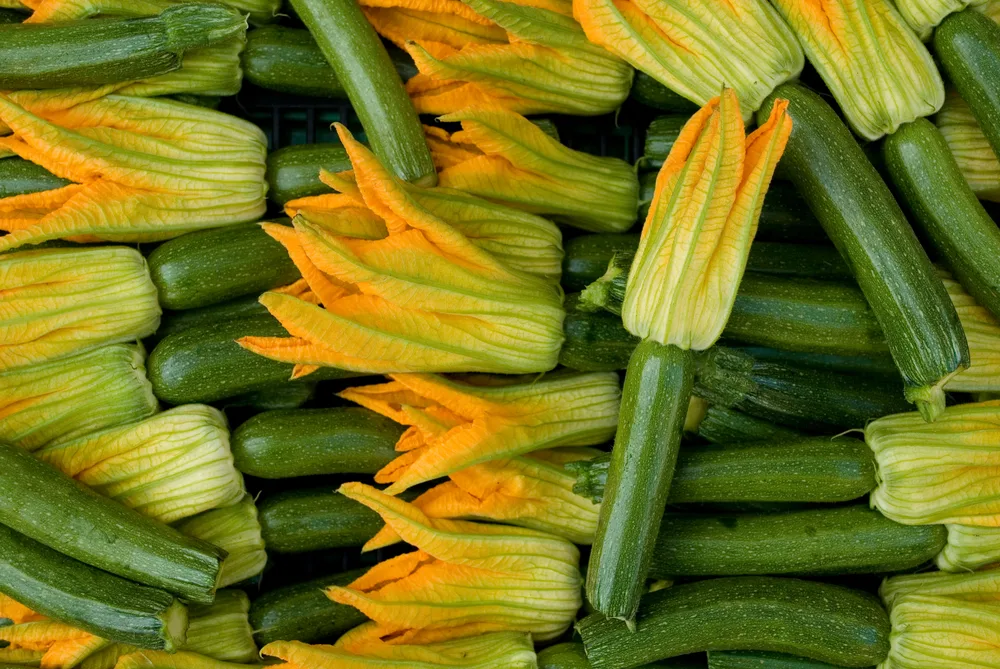
Harvesting zucchini while they are still quite small is always the best policy.
They will often taste much better, and won’t be quite as bland and watery during earlier stages of their growth.
More than this, however, harvesting fruits when they are relatively small will also reduce the strain on container grown plants, and make it more likely that they will keep producing for longer.
15. Make the Most of Your Zucchini Harvests
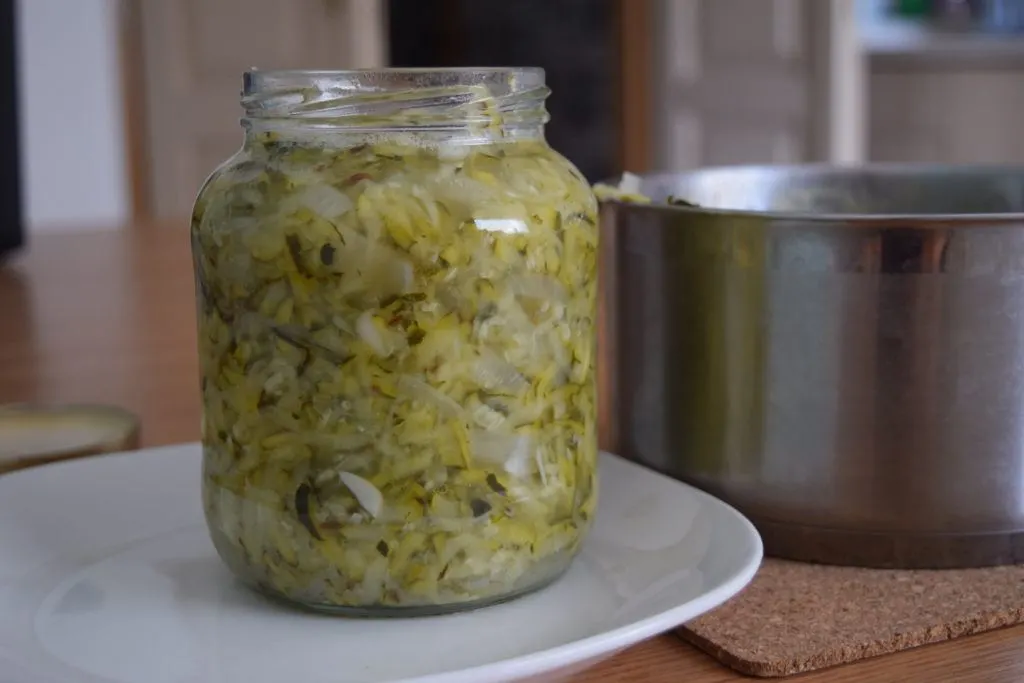
Finally, remember that though gardening in containers can involve more work than in-ground growing, you’ll be rewarded for all your efforts.
Make sure that you keep up your enthusiasm for maintaining your container garden by using your zucchini in a wide range of interesting recipes and preserves.
Providing a relatively high yield in a relatively small amount of space, container grown zucchini can be a fantastic value thing to grow.
Follow the tips above and you should have no problem successfully growing zucchini in containers wherever you live. Remember, you don’t need to have a large garden to start growing your own food. Of course, you’ll want to follow these important tips for your biggest zucchini harvest – whether you grow them in containers or not.
Read Next:

Get the famous Rural Sprout newsletter delivered to your inbox.
Including Sunday musings from our editor, Tracey, as well as “What’s Up Wednesday” our roundup of what’s in season and new article updates and alerts.


